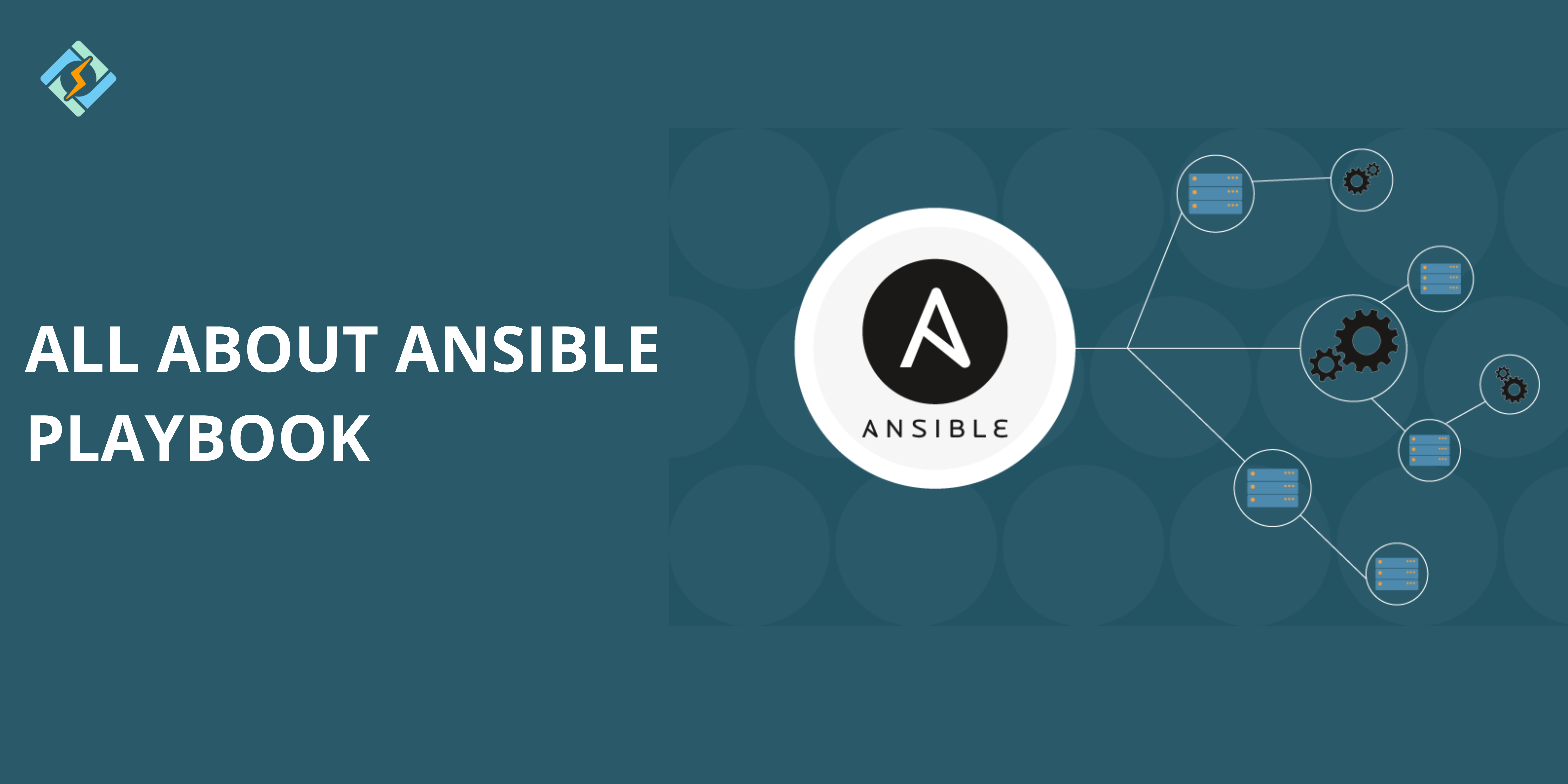In the realm of IT automation, configuration management, and provisioning, Ansible has established a niche for itself. Agentless, lightweight, and easy to learn, it allows sysadmins and DevOps engineers to manage infrastructure at scale through easy-to-read YAML files called Ansible Playbooks.
If you’re just starting with Ansible or want to get more familiar with playbooks, this guide will lead you from the basics to best practices, all in a friendly, human voice like a veteran engineer is explaining it over coffee.
What is an Ansible Playbook?

Picture having a to-do list to set up servers: install packages, transfer files, set up users, reboot services. That’s basically an Ansible playbook a list of actions, in YAML syntax, that specifies what to do on target systems. Every playbook explains what to do, on which hosts, and in what sequence. You can automate tedious work and run it on multiple systems in the same way.
YAML: The Playbook Language
Ansible playbooks employ YAML, a human-readable, structured language. In contrast to complicated scripts, YAML is easier for team members to read and manage automation.
Here’s a really simple example of a playbook:
name: Install Apache on web servers<br>hosts: webservers<br>become: yes tasksname: Install Apache<br>apt:<br>name: apache2<br>state: presentIn the above example:
Get exclusive access to all things tech-savvy, and be the first to receive
the latest updates directly in your inbox.
name: A descriptive name.
hosts: The target host group.
become: yes: Execute as a superuser (sudo).
tasks: The list of individual tasks.
Anatomy of an Ansible Playbook
It is essential to understand the fundamental elements of a playbook in order to write tidy, effective, and scalable configurations.
Plays
Each play assigns a group of hosts to tasks. There can be a single or several plays in one playbook. Think of each play as a page in your story of orchestration.
Tasks
Tasks invoke Ansible modules, which are kind of preinstalled mini-programs that do things (such as installing a package or restarting a service).
Handlers
Handlers are unique tasks which execute only on notification from a different task. They’re fantastic for things like restarting services when necessary.
tasks:<br>name: Update nginx config<br>template:<br>src: nginx.conf.j2<br>dest: /etc/nginx/nginx.conf<br>notify: restart nginx<br>handlers:<br>name: restart nginx<br>service:<br>name: nginx<br>state: restartedVariables
Variables enable you to make playbooks reusable and flexible. You can declare them in numerous locations within playbooks, inventory files, or variable files.
vars:<br>app_port: 8080<br>tasks:<br>name: Start my app<br>shell: "start-app --port {{ app_port }}"Templates
Ansible employs Jinja2 templating, which enables you to build dynamic configuration files.
Roles
Roles assist in dividing playbooks into reusable parts. You can divide tasks, variables, templates, and handlers into an organized directory structure.
Real-World Playbook Examples
Let’s go over some real-world examples that you can use in a real-world scenario.
Provisioning a Web Server
name: Provision LAMP stack<br>hosts: webservers<br>become: true vars:<br>mysql_root_password: mypassword tasks:<br>name: Install Apache and PHP<br>apt:<br>name: "{{ item }}"<br>state: latest<br>loop:<br>apache2<br>php<br>libapache2-mod-php|<br>name: Install MySQL<br>debconf:<br>name: mysql-server<br>question: 'mysql-server/root_password'<br>value: "{{ mysql_root_password }}"<br>vtype: 'password'<br>name: Install MySQL server<br>apt:<br>name: mysql-server<br>state: presentDeploying a Custom App
name: Deploy my Django app<br>hosts: appservers<br>become: true tasks:<br>name: Clone Git repo<br>git:<br>repo: 'https://github.com/user/repo.git'<br>dest: /opt/myapp<br>name: Install dependencies<br>pip:<br>requirements: /opt/myapp/requirements.txt<br>name: Start Gunicorn<br>systemd:<br>name: gunicorn<br>enabled: yes<br>state: startedUsing Inventories Effectively
Ansible inventories shape your infrastructure. They are the lists of machines Ansible communicates with and may include variables for host or group.

[webservers]
192.168.1.10
192.168.1.11
[dbservers]
192.168.1.20 ansible_user=dbadmin ansible_ssh_private_key_file=~/.ssh/db.pemYou can also use dynamic inventories to pull hosts from cloud providers such as AWS, GCP, or Azure.
Best Practices for Writing Ansible Playbooks
Good playbooks are much like good code clean, modular, and easy to read.
- Use Roles for Organization: Group similar tasks into roles so you can reuse them. Ansible Galaxy also contains a lot of pre-built roles.
- Keep Playbooks DRY: Don’t repeat yourself using loops, includes, and variables.
- Use Tags Wisely: Tags allow you to run certain sections of a playbook. Extremely handy for debugging or testing:
ansible-playbook site.yml --tags "install"Use Vault for Secrets
Store credentials securely using Ansible Vault.
ansible-vault create secrets.yml<br>ansible-playbook playbook.yml --ask-vault-passDocument Your Playbooks
Use descriptive naming, comments, and name fields in tasks to make playbooks easy to read.
Debugging and Troubleshooting
Despite clean playbooks, things can still go awry.
Use the -v Flag
Run Ansible in verbose to see more output:
ansible-playbook myplaybook.yml -vInclude more vS (-vvv, -vvvv) for greater detail.
Use debug Module
name: Display variable value<br>debug:<br>var: my_variableUse check Mode
This is a dry-run mode that will allow you to view what will happen:
<code>ansible-playbook playbook.yml --check</code>Ansible Playbooks’ Common Use Cases
Playbooks are being utilized everywhere — from installing a dev environment to controlling cloud infrastructure. Here are a few use cases in real life:
- Cloud provisioning using AWS/GCP modules
- Kubernetes deployments with community roles
- CI/CD pipelines by integrating Jenkins/GitHub Actions
- Security patching in hundreds of servers
- Automating backups and monitoring of services
Where Playbooks Fit into the Larger DevOps Context
In a contemporary DevOps toolchain, Ansible Playbooks tend to be used in conjunction with tools such as:
- Terraform for infrastructure provisioning
- Docker for containerization
- Kubernetes for orchestration
- Jenkins or GitLab CI for pipelines
Playbooks assist in keeping things idempotent, i.e., running them multiple times does not alter the ultimate outcome. That’s important for trustworthy automation.
Advanced Techniques
Dynamic Includes and Task Conditions
include_tasks: install_debian.yml<br>when: ansible_os_family == "Debian"<br>include_tasks: install_redhat.yml<br>when: ansible_os_family == "RedHat"Custom Modules
You can write your own modules in Python if the built-ins aren’t sufficient.
Call APIs or Shell Scripts
Ansible can call REST APIs or run scripts conditionally.
Conclusion
Ansible Playbooks are not merely scripts. They’re a statement of what your infrastructure should look and act like. With their easy-to-use YAML syntax, modular design, and rich ecosystem, playbooks bring configuration management to the masses from sysadmins to cloud engineers to DevOps experts.
Whether you have a few servers to automate or you’re shepherding a worldwide fleet, learning playbooks will make you more efficient, quicker, and more confident when it comes to infrastructure automation.
FAQs
What is an Ansible Playbook in easy words?
An Ansible Playbook is a cookbook of sorts for automating actions on your servers. Rather than having to log in and set up systems manually, you document all your procedures in a YAML file and have Ansible execute them for you.
What programming language do you use to create Ansible Playbooks?
Ansible Playbooks use YAML (Yet Another Markup Language) to author them. YAML is easy to read, clean, and straightforward, making it perfect for automated scripts that everyone on the team can read and maintain.
How does a play differ from a task within a playbook?
A play specifies on which hosts to run and what role/tasks to execute, whereas a task is a single command, such as installing a package or running a service. Reconsider plays as chapters and tasks as the steps within the chapters.



